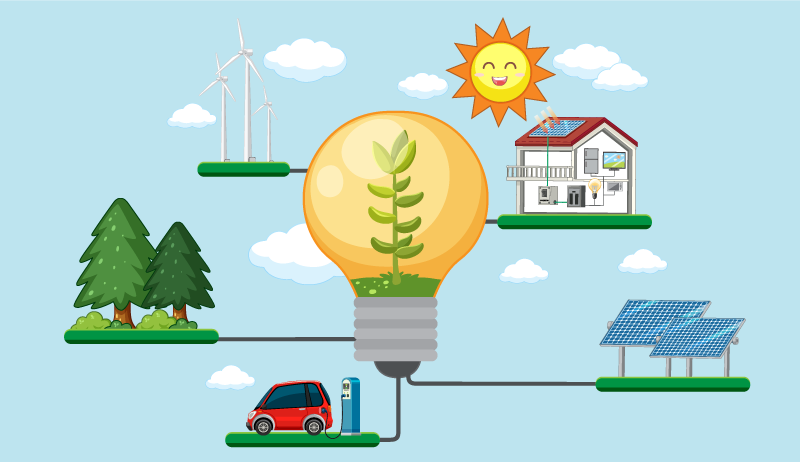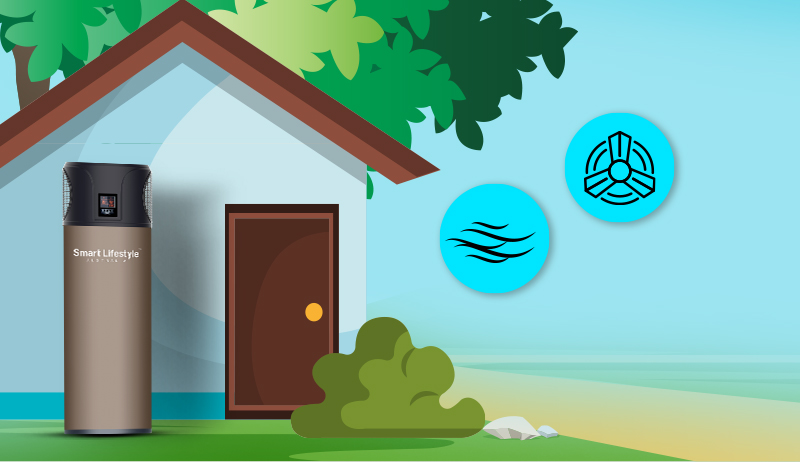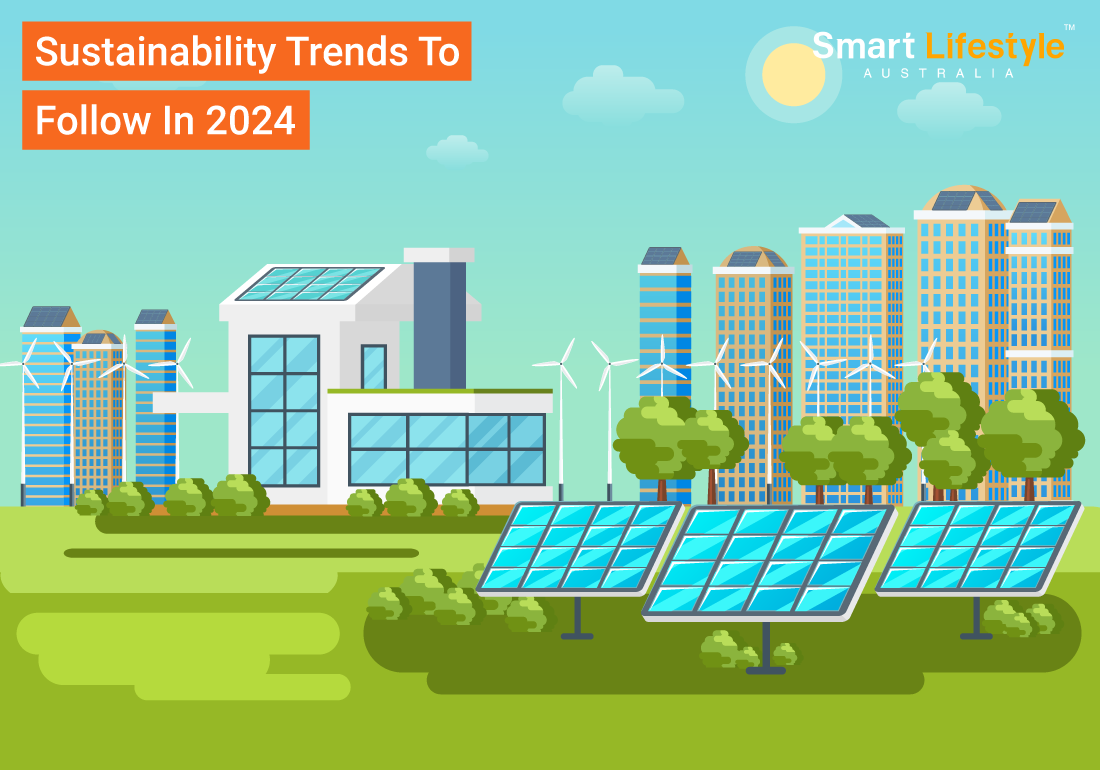In 2024, Australia leads the way in adopting sustainability trends that will not only impact the environment but also the socio-economic structure of the country. This year, the main emphasis is on full climate transparency, with new sustainability guidelines being implemented to highlight the importance of openly reporting environmental impacts.
The Australian government has taken a proactive approach by introducing initial legislation for compulsory disclosure of climate-related financial information, indicating a move towards stricter environmental management.
In the realm of consumer trends, Australians are increasingly leaning towards sustainable living, as indicated by the growing popularity of eco-friendly home renovations and a rising demand for frozen foods that adhere to sustainable principles.
Moreover, individuals are embracing sustainability by incorporating solar panels and hot water heat pumps in their homes to reduce their environmental impact and promote energy efficiency.
In this blog, you will discover the sustainability trends to follow in 2024 as Australia embraces these shifts, highlighting that sustainability is not merely a transient issue but a fundamental aspect of the country’s path towards a resilient and environmentally conscious future.

Renewable Energy Expansion
Embracing renewable energy means you are moving towards using energy sources that naturally renew themselves, like sunlight, wind, water, and geothermal heat, instead of depending heavily on fossil fuels such as coal, oil, and gas.
By adopting technologies like solar panels, which capture sunlight and turn it into electricity, you are choosing a sustainable and environmentally friendly power option for your home, business, and transportation needs.
Choosing to use solar panels not only supports cleaner energy production but also plays a part in building a more sustainable future by lessening environmental harm and decreasing reliance on finite resources.
Climate Adaptation Strategies
Climate adaptation strategies are plans and actions designed to help you cope with the impacts of climate change.
These strategies aim to reduce your vulnerability and build resilience to changes in temperature, precipitation patterns, sea levels, extreme weather events, and other climate-related risks.
Here are some common climate adaptation strategies for you to consider:
- Infrastructure Resilience: Upgrading infrastructure such as roads, bridges, buildings, and utilities to withstand the impacts of climate change, such as increased flooding, stronger storms, and higher temperatures.
- Natural Resource Management: Protecting and restoring natural ecosystems like wetlands, forests, and coastal habitats can help buffer against climate impacts, provide flood protection, regulate water supplies, and support biodiversity.
- Water Management: Implementing measures to manage water resources more sustainably, such as building water storage and retention systems, improving irrigation efficiency, and restoring watersheds to reduce the risk of droughts and floods.
- Crop Diversification: Encouraging you to diversify crops and adopt resilient agricultural practices that are less susceptible to extreme weather events, pests, and diseases can help ensure food security in a changing climate.
- Urban Planning: Incorporating climate considerations into urban planning processes by designing cities to be more resilient to heatwaves, flooding, and other climate-related hazards. This includes green infrastructure, such as parks and green roofs, to absorb rainwater and reduce urban heat island effects.
- Disaster Preparedness: Developing and implementing early warning systems, emergency response plans, and evacuation procedures to better prepare for and respond to extreme weather events like hurricanes, floods, wildfires, and heatwaves.
- Community Engagement: Engaging you in the adaptation planning process to ensure that strategies are culturally appropriate, socially inclusive, and address the needs of vulnerable populations, such as low-income communities, indigenous peoples, and the elderly.
- Insurance and Financial Mechanisms: Establishing insurance programs, risk-sharing mechanisms, and financial incentives to help individuals, businesses, and governments recover from climate-related losses and invest in adaptation measures.
Overall, climate adaptation strategies are essential for reducing the risks and impacts of climate change on your communities, ecosystems, and economies, and for building a more resilient and sustainable future.

Circular Economy Initiatives
When we talk about reducing waste and recycling more, we’re looking at how different industries can do better. Circular economy is all about changing how we use things.
Instead of just making, using, and throwing away stuff like we usually do, in a circular economy, the goal is to keep using things as long as possible, get the most out of them, and then find ways to reuse or recycle them when they’re no longer needed.
This means making products that last longer, can be fixed easily, and used again. It also involves things like recycling, remaking products, and sharing instead of tossing them out.
By following these practices, we can cut down on waste, save resources, and help the environment while also creating new opportunities for businesses and encouraging new ideas.

Sustainable Transport Solutions
Opting for sustainable transportation solutions means you are choosing ways to travel that benefit the environment, society, and economy in the long term.
These solutions focus on lessening the harmful effects of transportation, such as air pollution, greenhouse gas emissions, traffic congestion, and reliance on fossil fuels. Here are some examples for you to consider:
- Public Transit: By investing in buses, trains, trams, and subways, you can make it more convenient for yourself to travel without relying on your own vehicle. Public transit systems help in reducing traffic congestion and air pollution while offering affordable and accessible transportation options for all.
- Walking and Biking Infrastructure: Supporting the creation of safe and convenient walking and biking paths encourages you to choose these active modes of transportation instead of driving. This promotes physical activity, reduces emissions, and enhances public health.
- Electric Vehicles (EVs): Transitioning to electric cars, buses, bikes, and scooters helps in decreasing dependence on fossil fuels, thereby reducing air pollution and greenhouse gas emissions. Charging infrastructure and incentives for EV adoption play crucial roles in sustainable transportation plans.
- Car-Sharing and Ride-Sharing: Participating in ride-sharing or car-sharing services like GoGet or ride-sharing apps such as Uber can lead to fewer cars on the road, decreased traffic congestion, and lower overall transportation expenses.
- Alternative Fuels: Opting for cleaner fuels like biofuels, hydrogen, or renewable natural gas in vehicles aids in lowering emissions and reducing reliance on oil.
- Smart Transportation Systems: Implementing technologies such as traffic management systems, intelligent transportation systems, and real-time transportation apps can optimize traffic flow, decrease congestion, and enhance overall efficiency.
- Urban Planning: Designing cities and communities that prioritize walking, biking, and public transit over car travel can reduce the necessity for long-distance commutes, promote mixed land use, and develop more livable, pedestrian-friendly neighborhoods.
By embracing sustainable transportation solutions, you aim to strike a balance between the needs of people, the environment, and the economy to establish a more efficient, fair, and resilient transportation system for the future.
Corporate Sustainability Reporting
Corporate sustainability reporting in Australia involves companies like yours disclosing information about your environmental, social, and governance (ESG) performance to stakeholders, including investors, customers, employees, and the public.
Here’s what you need to know about corporate sustainability reporting in Australia:
You operate within a regulatory framework in Australia that lacks a single mandatory reporting framework for corporate sustainability. However, various guidelines and frameworks exist to assist you in reporting your sustainability performance.
The Global Reporting Initiative (GRI) is the most commonly utilized framework, offering principles and indicators for sustainability reporting.
The Australian Securities Exchange (ASX) Corporate Governance Principles and Recommendations encourage listed companies like yours to disclose information on environmental and social risks and their management.
While compliance with these principles is voluntary, many listed companies opt to disclose sustainability information to meet investor expectations and enhance transparency.
Consider adopting integrated reporting to combine financial and non-financial information, presenting a comprehensive view of your performance and value creation. Integrated reporting aims to showcase how your strategy, governance, and performance contribute to your long-term sustainability.
Certain industries in Australia, such as mining, energy, and finance, have specific reporting requirements concerning environmental and social impacts.
For instance, mining companies must report on their environmental management and community engagement practices to comply with regulations and secure social license to operate.
Engage with stakeholders, including investors, customers, employees, suppliers, and communities like yours, to identify crucial sustainability issues and reporting priorities. Stakeholder engagement aids in understanding expectations, enhancing transparency, and fostering trust with stakeholders.
Conduct materiality assessments to pinpoint and prioritize the most significant sustainability issues relevant to your business and stakeholders. Materiality guides you in determining which issues to report on and how to integrate sustainability into your business strategy.
Consider obtaining third-party assurance or verification of your sustainability reports to bolster credibility and reliability. Independent assurance offers stakeholders confidence that the reported information is precise and dependable.
Therefore, corporate sustainability reporting in Australia is influenced by a blend of voluntary initiatives, regulatory guidelines, stakeholder expectations, and industry-specific requirements. By reporting on your sustainability performance, you demonstrate your dedication to responsible business practices, transparency, and accountability in contributing to a sustainable future.
Conclusion
In conclusion, as you navigate through 2024, embracing sustainability trends is crucial for shaping a more environmentally conscious and resilient future. By focusing on renewable energy expansion, you can contribute to reducing reliance on fossil fuels and mitigating climate change impacts.
Implementing climate adaptation strategies will help you build resilience to changing environmental conditions and minimize risks. Engaging in circular economy initiatives allows you to adopt sustainable practices in resource use and waste management.
Embracing sustainable transport solutions enables you to reduce emissions and promote eco-friendly modes of transportation.
Furthermore, participating in corporate sustainability reporting fosters transparency and accountability in your environmental, social, and governance performance.
By following these sustainability trends in 2024, you are actively contributing to a more sustainable and prosperous future for yourself and the planet.




